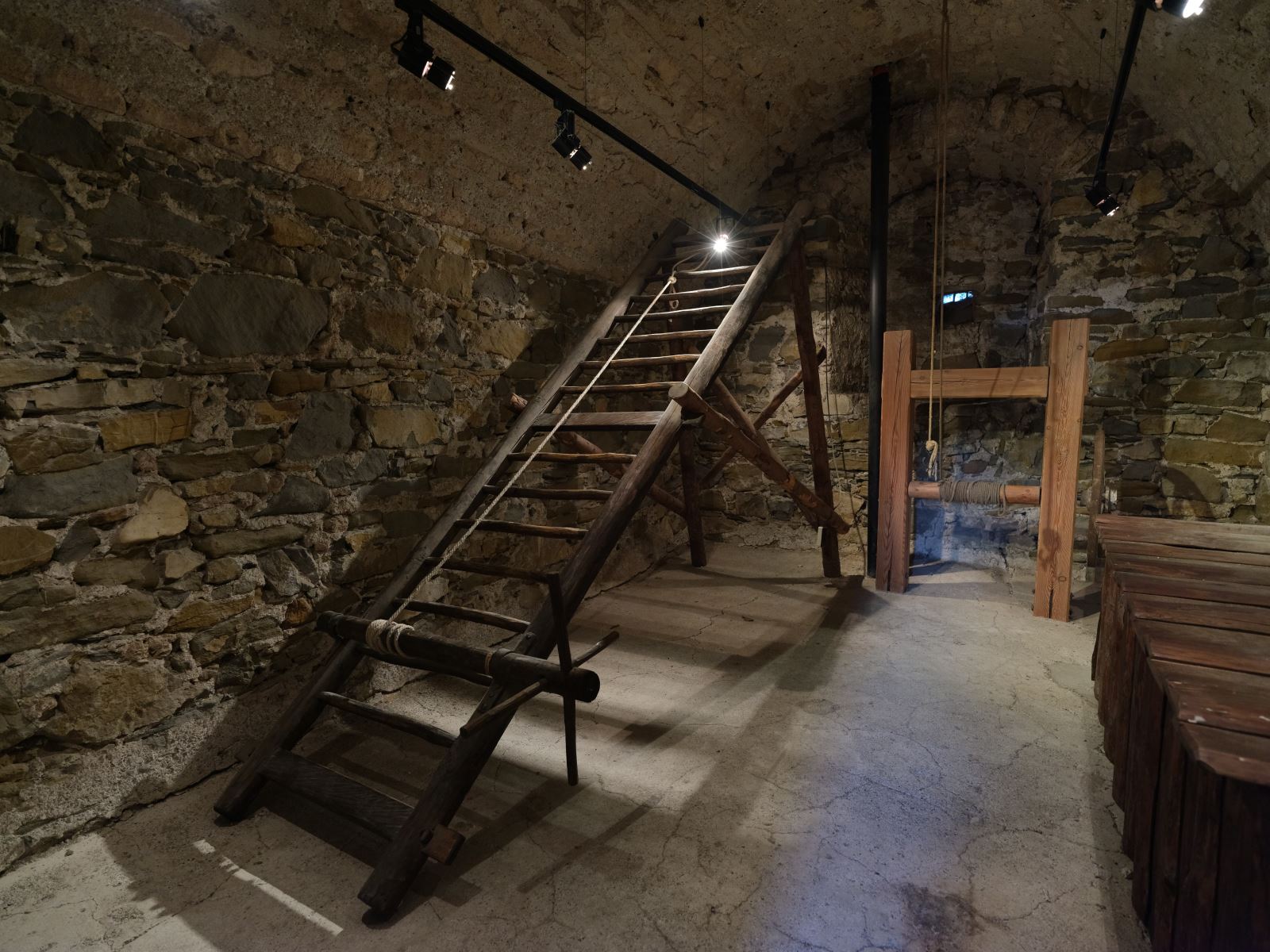
Rack torture is one of history's most infamous methods of inflicting pain and extracting confessions. Originating in ancient Greece, this brutal device has left a dark legacy spanning centuries and continents. From its early use on slaves and non-citizens to its notorious application during the Spanish Inquisition, the rack has been a symbol of human cruelty. Victims like Anne Askew and Guy Fawkes endured unimaginable suffering, their stories echoing through time. The rack's mechanics, involving the relentless stretching of limbs, caused severe physical and psychological damage. Understanding this grim chapter in history underscores the importance of human rights and the fight against torture.
Origins and Early Use of the Rack
The rack, a device infamous for its brutal methods, has a long and dark history. Its origins trace back to ancient Greece, where it was used to torture slaves and non-citizens.
- The earliest recorded use of the rack dates back to 356 BC, when it was applied to gain a confession from Herostratus, an arsonist who burned down the Temple of Artemis at Ephesus.
- In ancient Greece, the rack was used as a means of extracting information from slaves and non-citizens. Alexander the Great had the pages who conspired to assassinate him, along with their mentor Callisthenes, tortured on the rack in 328 BC.
- The Romans also employed the rack, often referred to as the equuleus. Emperor Nero used the rack on a woman named Epicharis in an attempt to extract information about a conspiracy to assassinate him. Despite the torture, Epicharis refused to talk and eventually strangled herself.
- The rack was also used on early Christian martyrs. St. Vincent, for example, was tortured on the rack in 304 AD. The Church Fathers Tertullian and St. Jerome mentioned the use of the rack in their writings.
Introduction to Medieval Europe
The rack made its way to medieval Europe, where it became a tool of choice for extracting confessions and meting out punishment.
- The rack was introduced to medieval Europe by John Holland, the 2nd Duke of Exeter, in 1447. It was thus popularly known as "the Duke of Exeter's daughter".
- The first recorded use of the rack in England was by John Holland, who used it as the constable of the Tower of London. This marked the beginning of its widespread use in medieval England.
- One of the most famous victims of rack torture in England was Anne Askew, a Protestant martyr who was tortured on the rack before her execution in 1546. She was so damaged by the torture that she had to be carried on a chair to her burning at the stake.
- Nicholas Owen, a Catholic martyr, died under torture on the rack in the Tower of London in 1606. He was known for building priest holes to hide Catholic priests from persecution.
- Guy Fawkes, the conspirator behind the Gunpowder Plot, is believed to have been put to the rack. A royal warrant authorizing his torture survives, indicating that lesser tortures were initially applied, but more severe methods like the rack could be used if he remained recalcitrant.
- In 1615, a clergyman named Edmond Peacham was accused of high treason and subjected to rack torture. This case raised questions about the legality of using such methods in England.
- Charles I authorized the use of rack torture in Ireland in 1628, marking one of the last times it was used in that country. The judges in England resisted this practice, declaring it contrary to English law.
- In 1679, Miles Prance, a silversmith accused of murdering a magistrate, was threatened with rack torture. This incident highlights the continued use of the rack well into the 17th century.
Mechanics and Pain Infliction
The rack's design and operation were simple yet horrifyingly effective, causing immense physical and psychological pain.
- In Russia, up to the 18th century, the rack was used as a gallows-like device for suspending victims (strappado). The suspended victims were whipped with a knout and sometimes burned with torches.
- The rack consists of a rectangular wooden frame slightly raised from the ground, with rollers at one or both ends. The victim's wrists and ankles are chained to these rollers. As the torturer turns the handle and ratchet mechanism attached to the top roller, the chains are gradually retracted, stretching the victim's shoulders, hips, knees, and elbows, causing excruciating pain.
- The rack inflicts pain by stretching the victim's limbs beyond their natural limits. This relentless stretching can cause dislocated joints, torn ligaments, and snapped bones. The torturer has control over the degree of stretching, allowing them to gradually increase the tension and push the victim to their limits.
- The rack was not only a tool of physical torture but also a means of psychological manipulation. Skilled torturers could make victims confess their crimes quickly by instilling fear of the upcoming stretching of their limbs.
Historical Use and Famous Victims
The rack's use transcended cultural boundaries, leaving behind a legacy of suffering and anguish.
- The rack was used in various regions and during different periods of time. Its use transcended cultural boundaries, leaving behind a legacy of suffering and anguish. The rack is certainly one of the most gruesome instruments of torture in medieval history.
- Among the most famous alleged victims of rack torture were William Wallace, the Scottish rebel who inspired Mel Gibson’s Braveheart, and Saint Anne Askew, who was tortured before her execution in 1546.
- The rack was most notoriously used by the Spanish Inquisition, a Catholic organization that forced everyone in Europe and its territories to convert to Catholicism through extreme force. Torquemada, the infamous torturer of the Spanish Inquisition, favored a “potoro,” or stretching rack.
- Galileo Galilei, the famous astronomer who supported the theory that the Earth orbits around the Sun, was questioned by the Inquisition but not physically tortured. However, he must have suffered mental torture while trying to stick to his scientific views.
Public Humiliation and Variations
The rack was often used in conjunction with public humiliation, and its design saw various adaptations.
- The rack was often used in conjunction with public humiliation. Victims were paraded through streets, displaying their injuries as a warning to others. This public spectacle served as a deterrent against crime and reinforced the power of the authorities.
- While the basic design of the rack remained consistent, there were variations in its construction. Some racks had additional mechanisms like pincers or spiked collars to further inflict pain and injury.
- The duration of punishment varied from a few hours to several days, depending on the severity of the crime committed. The longer the victim was subjected to torture, the more severe the physical and psychological harm.
- The rack served as a form of public spectacle and a deterrent against crime. Offenders were placed in the pillory or subjected to other forms of public humiliation, which could include verbal and physical assaults.
- The pillory was another form of public humiliation used in medieval Europe. It consisted of a wooden framework with holes for the head and hands, where the offender would be confined and displayed to the public. The pillory was used to punish individuals convicted of minor crimes like theft, fraud, and public drunkenness.
Other Torture Devices
The rack was not the only device used for torture during medieval times. Other devices were equally horrifying.
- The Judas Cradle, also known as the Judas Chair, was primarily used by the Spanish Inquisition and other judicial systems of that time. This torture tool consisted of a pyramid-shaped seat with a pointed tip. The victim would be placed on top of the seat, usually with their legs bound, and gradually lowered onto the sharp point, inflicting internal injuries.
- The knee splitter was another terrible medieval torture device. Designed to immobilize the victim, it consisted of two spiked wood blocks or sharp blades attached to a hinged mechanism. The victim’s knees were forced onto the device, causing severe injuries as the spikes or blades penetrated deeply into the flesh and bone.
Cultural and Historical Impact
The rack had a significant cultural impact, symbolizing the brutal methods used by medieval authorities.
- The rack had a significant cultural impact, symbolizing the brutal and inhumane methods used by medieval authorities to extract confessions and punish offenders. Its use transcended cultural boundaries, leaving a lasting legacy of suffering and anguish.
- The use of rack torture was not without controversy. In 1628, the question of its legality was raised in connection with a proposal in the Privy Council to rack John Felton, the assassin of George Villiers, the 1st Duke of Buckingham. The judges resisted this proposal, unanimously declaring its use to be contrary to English law.
- By the 17th century, the use of rack torture began to decline in Europe. In 1697 Britain, a silversmith named Miles Prance was threatened with rack torture, but it was not used. This marked one of the last times the rack was considered as a viable method of torture in England.
- The rack left behind a legacy of suffering and anguish. Its use in various regions and during different periods of time has been documented extensively in historical records. The rack remains one of the most infamous instruments of torture in human history.
Psychological and Physical Effects
The effects of rack torture were profound, leaving lasting scars on its victims.
- The psychological effects of rack torture were profound. Victims often suffered from long-term mental trauma, including anxiety, depression, and post-traumatic stress disorder (PTSD). The fear of being subjected to such torture could be a powerful tool for extracting confessions.
- The physical consequences of rack torture were severe. Victims often suffered from dislocated joints, torn ligaments, and snapped bones. In some cases, the muscles were stretched to the point of ineffectiveness, rendering them useless for the rest of their lives.
- Public perception of rack torture varied over time. Initially, it was seen as an acceptable method of punishment and interrogation. However, as societal attitudes towards punishment shifted, the use of the rack became increasingly controversial and eventually declined.
- Despite the decline of rack torture in modern times, its legacy continues to influence contemporary discussions about human rights and the ethics of interrogation. The use of such methods is now widely condemned as a violation of human dignity and a form of cruel, inhuman, and degrading treatment.
The Dark Legacy of Rack Torture
Rack torture stands as a grim reminder of humanity's capacity for cruelty. Originating in ancient Greece, this brutal device spread through Rome, medieval Europe, and even Russia. It was used to extract confessions, punish, and instill fear. The rack inflicted severe physical pain, dislocating joints, tearing ligaments, and snapping bones. Psychological torment was equally devastating, leaving victims with long-term trauma. Famous figures like Anne Askew, Nicholas Owen, and Guy Fawkes suffered under its relentless grip. Despite its decline by the 17th century, the rack's legacy lingers, influencing modern discussions on human rights and ethical interrogation. Understanding this dark chapter in history underscores the importance of protecting human dignity and condemning inhumane practices. The rack, with its history of suffering, serves as a stark warning against the misuse of power and the need for compassion in justice.
Was this page helpful?
Our commitment to delivering trustworthy and engaging content is at the heart of what we do. Each fact on our site is contributed by real users like you, bringing a wealth of diverse insights and information. To ensure the highest standards of accuracy and reliability, our dedicated editors meticulously review each submission. This process guarantees that the facts we share are not only fascinating but also credible. Trust in our commitment to quality and authenticity as you explore and learn with us.


